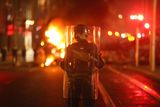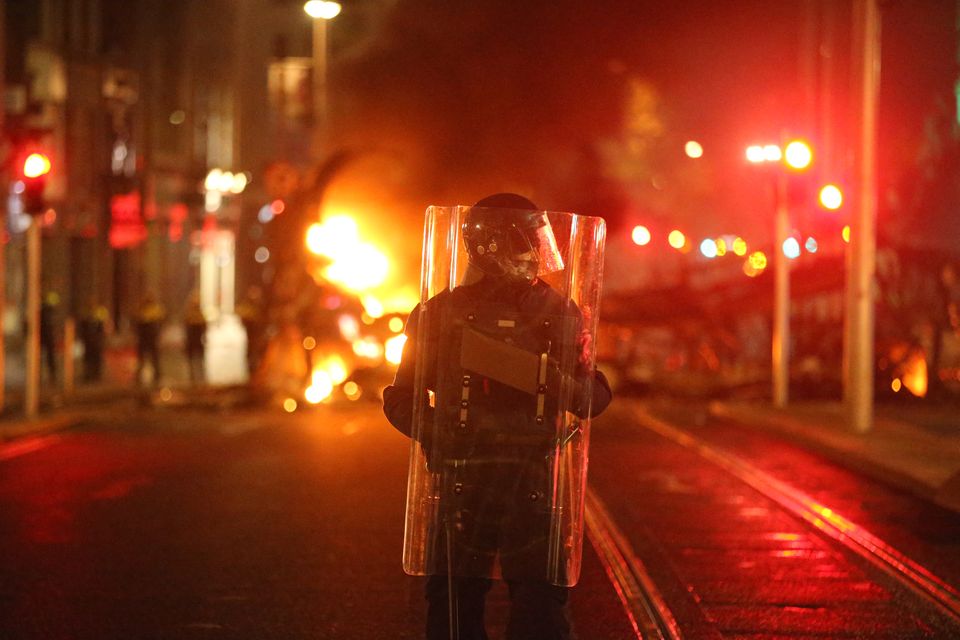Christy Mangan: It’s time for gardaí to reclaim the streets
Dublin is rife with anti-social behaviour, criminality and drug-taking — it’s only when these issues are tackled that we can prevent further riots


One day during the summer, my wife and I took a train to Dublin. We arrived at Connolly Station on a Saturday afternoon, planning to stroll through the city, go to a show and then have dinner afterwards.
We set off down Talbot Street, on to North Earl Street and O’Connell Street with a growing sense of unease at what was going on around us. We saw people drinking in laneways, in doorways and openly on the footpath, even in the alley beside the venue.
After the show finished, it was still bright when we came outside. The drinking and all the public order issues that go with it continued on the streets. The atmosphere was ugly and intimidating. We abandoned our plans for dinner and instead took a train home.
I have no doubt that the anti-social behaviour we witnessed on the streets of the capital that summer’s day laid the foundation for the violence and chaos that allowed a mob of criminals to take control of the city last Thursday week.
I watched the riots unfold on social media and through texts sent by former colleagues, and you didn’t have to be a policing person to know how that chaos had taken hold.
A heated protest by far-right actors over the shocking stabbings of children and a care worker in Parnell Square earlier that day was overrun by a mob of criminals intent on attacking An Garda Síochána.
We have seen this before. In February 2006, a unionist march on O’Connell Street escalated into a riot when their path was blocked by counter-demonstrators, and youths with no connection to the protest joined in, intent only on attacking gardaí, looting and vandalism.
I was appointed senior investigating officer to lead the inquiry into the riots. Another more senior officer asked me: “How did this [the riot] actually happen?”
So, the following Saturday, I took a walk with a colleague from O’Connell Bridge to Parnell Square.
At any one time we saw at least 50 to 60 people on the streets and side streets, drinking, taking drugs and engaging in crime, and with insufficient visible policing.
As law enforcers, we know crime flourishes in busy city-centre thoroughfares that have a limited policing presence. And when the right conditions take hold, public order can break down in an instant.
The garda response to the riots of last Thursday week is under scrutiny, and Garda Commissioner Drew Harris has instigated a review.
It is already clear that decisions taken by garda leadership failed to prevent a mob from taking control of the city, and only the solidarity and bravery of ordinary garda members seized it back.
Many of the gardaí initially called to the scene were young members of the force, who were left completely exposed.
They did not have training in public-order policing. They had to weigh up defending themselves from attack against their future careers. By drawing their batons, did they risk falling foul of the Garda Ombudsman? Would they end up being suspended or, worse, would they be charged and put before the courts?
There is ample evidence in text messages and WhatsApp messages that many of their colleagues didn’t wait around for requests from garda management for back-up: they simply dropped what they were doing and deployed themselves to the city centre.
Garda leaders who were working that day will have to stand over their decisions. Senior officers will be asked to account for their actions or inactions as what was clearly an incendiary situation escalated. Their decisions will be logged and recorded and available to reviewers.
Ultimately, it was the sheer number of gardaí who turned out to support their colleagues that overwhelmed the rioters and took back control of the streets.
Men and women dropped what they were doing and rushed to the city to assist their colleagues. Mr Harris and the minister cannot take credit for that.
The lessons we learned from the policing of the Love Ulster riots more than 17 years ago are more relevant than ever.
These include a visible garda presence on the streets; constant monitoring of social media groups; strong community policing that produces the unique intelligence that helps to anticipate trouble; a clear policing plan for riots; and a leadership that stands side by side with its members, taking decisions that support gardaí and not bureaucracy.
To start with, maybe we could stop the constant narrative from ministers that the streets are safe. The streets of Dublin are in a difficult place, but they are not lost.
The solidarity and strength of garda members won back the streets from rioters last Thursday week. With the right leadership from An Garda Síochána, the city can be reclaimed for good.
Christy Mangan retired as a chief superintendent in An Garda Síochána after a 40-year career. He is the author of ‘Cracking The Case: Inside The Mind Of A Top Garda’














.jpg)

